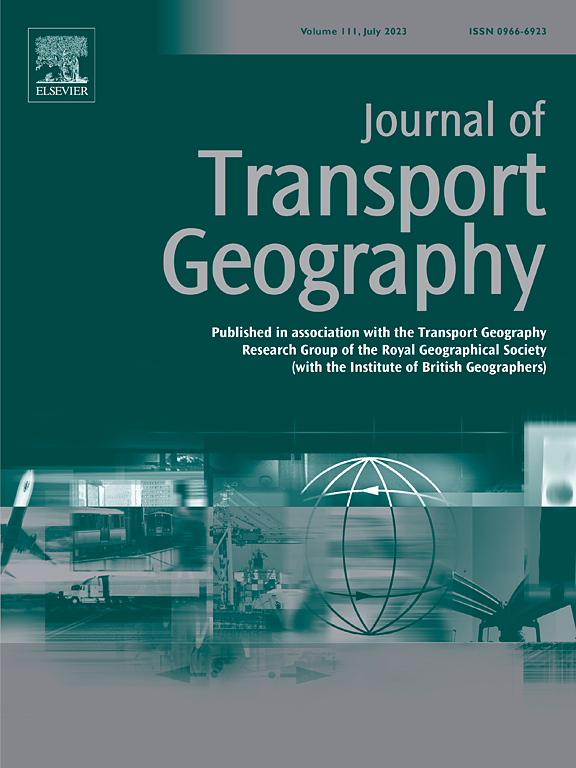基于gis的森林火灾中电动汽车行驶安全性评价
IF 5.7
2区 工程技术
Q1 ECONOMICS
引用次数: 0
摘要
电动汽车(ev)正在发展成为应对气候变化影响的绿色交通工具。然而,即使有足够的行驶里程,破坏性事件也可能阻碍电动汽车的移动性。因此,这项研究填补了交通研究的空白,包括潜在野火的时空影响,由加拿大火灾天气指数(FWI)的每日地图代表,同时计算电动汽车的最安全路线。在新斯科舍省的哈利法克斯进行了案例研究,使用了三种FWI情景,分别代表高、中、低风险情景。通过比较最安全路线和最短路线的FWI值和行程距离,调查不同充电状态下最安全路线上现有电动汽车充电基础设施(EVCI)的充分性,以及比较不同风险情景下的最安全路线来评估电动汽车的行程。本研究的结果对支持交通电气化的复原力具有重要意义,因为它是在破坏性事件期间实现主动应急规划的一步。本文章由计算机程序翻译,如有差异,请以英文原文为准。
A spatiotemporal GIS-approach for evaluating the safety of EV trips during wildfires
Electric Vehicles (EVs) are evolving as a green transportation means to address climate change impacts. However, disruptive events could impede EVs' mobility even with sufficient driving range. This study thus fills a gap in transportation research by including the spatiotemporal impact of potential wildfires, represented by the daily maps of the Canadian Fire Weather Index (FWI), while calculating EVs' safest routes. A case study is conducted in Halifax, Nova Scotia, using three FWI scenarios representing high, medium, and low risk scenarios. EV trips are evaluated by 1) comparing the safest and shortest routes' FWI value and trip distance, 2) investigating the adequacy of existing EV charging infrastructure (EVCI) on those safest routes under different State of Charge (SOC) levels for EVs, and 3) comparing the safest routes in the different risk scenarios. The findings of this research have significant implications in supporting the resilience of transportation electrification by being one step towards proactive emergency planning during disruptive events.
求助全文
通过发布文献求助,成功后即可免费获取论文全文。
去求助
来源期刊

Journal of Transport Geography
Multiple-
CiteScore
11.50
自引率
11.50%
发文量
197
期刊介绍:
A major resurgence has occurred in transport geography in the wake of political and policy changes, huge transport infrastructure projects and responses to urban traffic congestion. The Journal of Transport Geography provides a central focus for developments in this rapidly expanding sub-discipline.
 求助内容:
求助内容: 应助结果提醒方式:
应助结果提醒方式:


